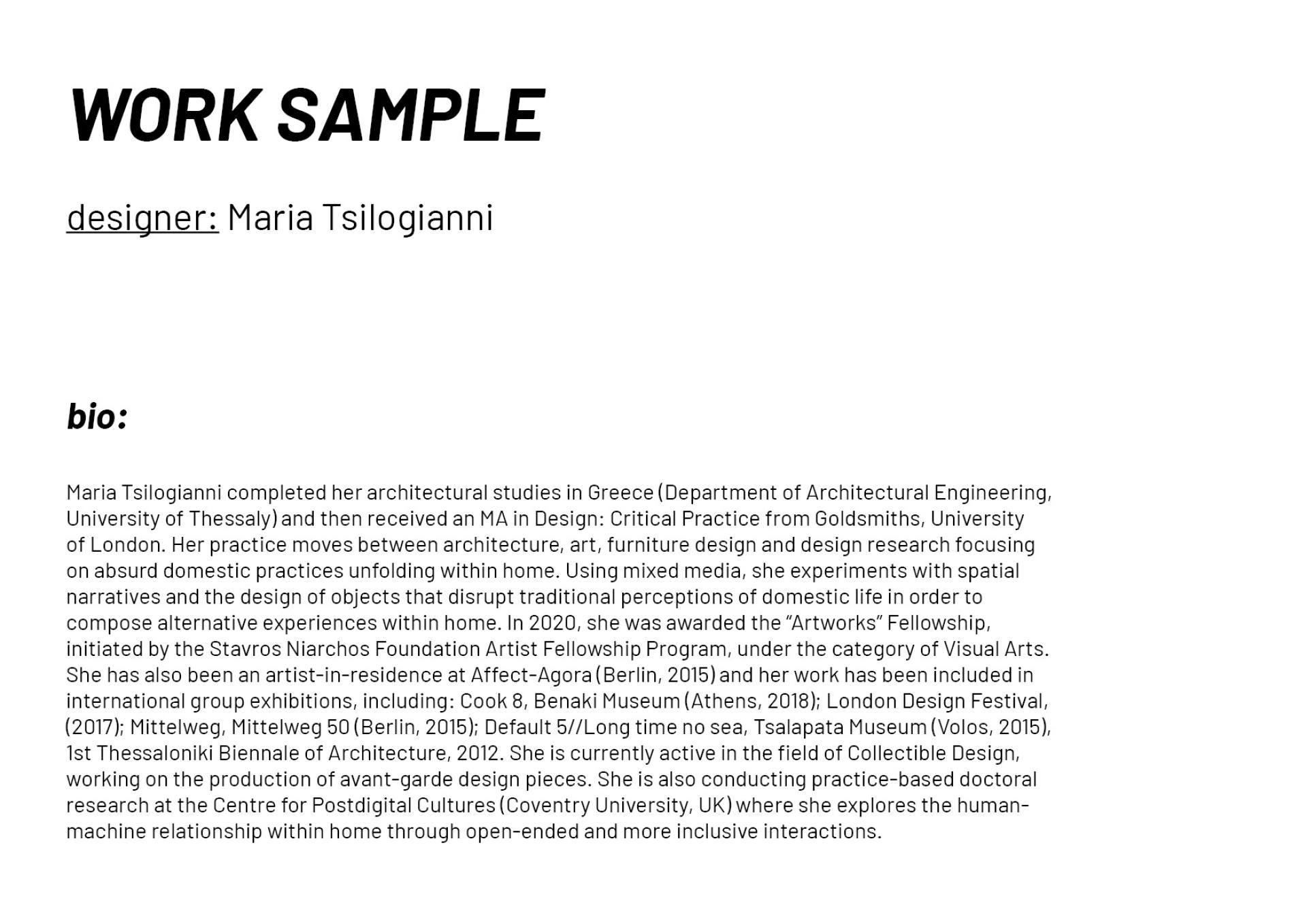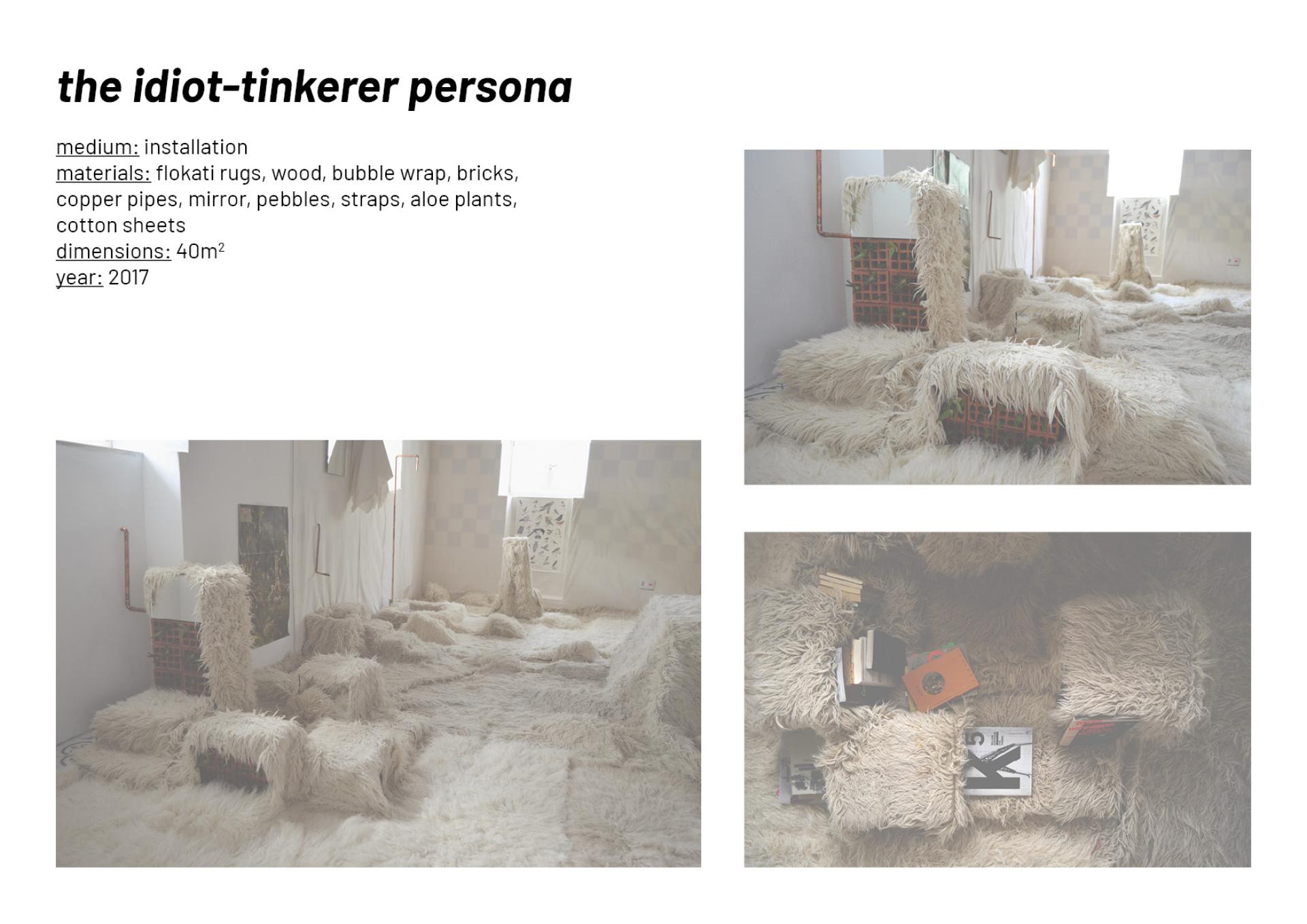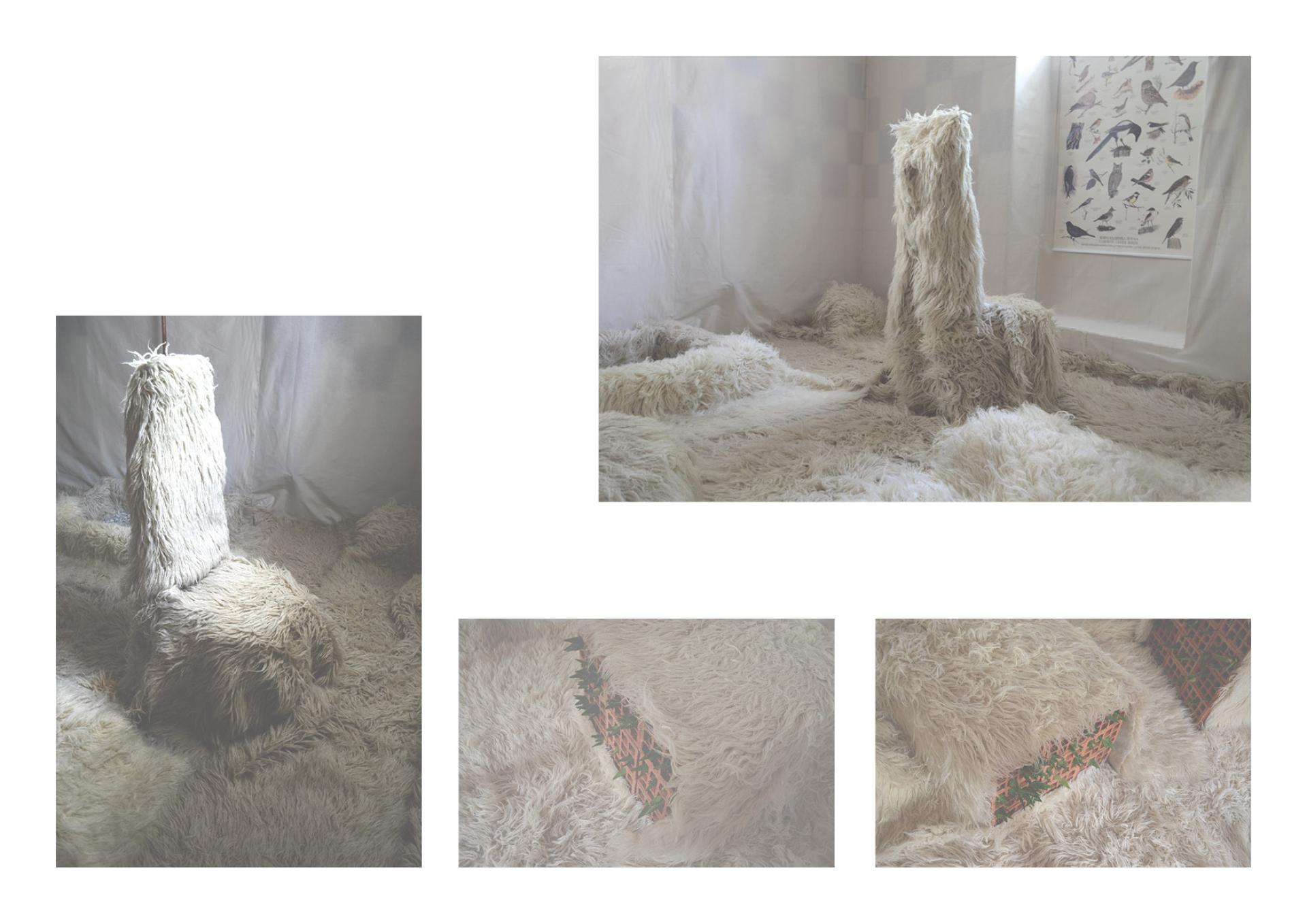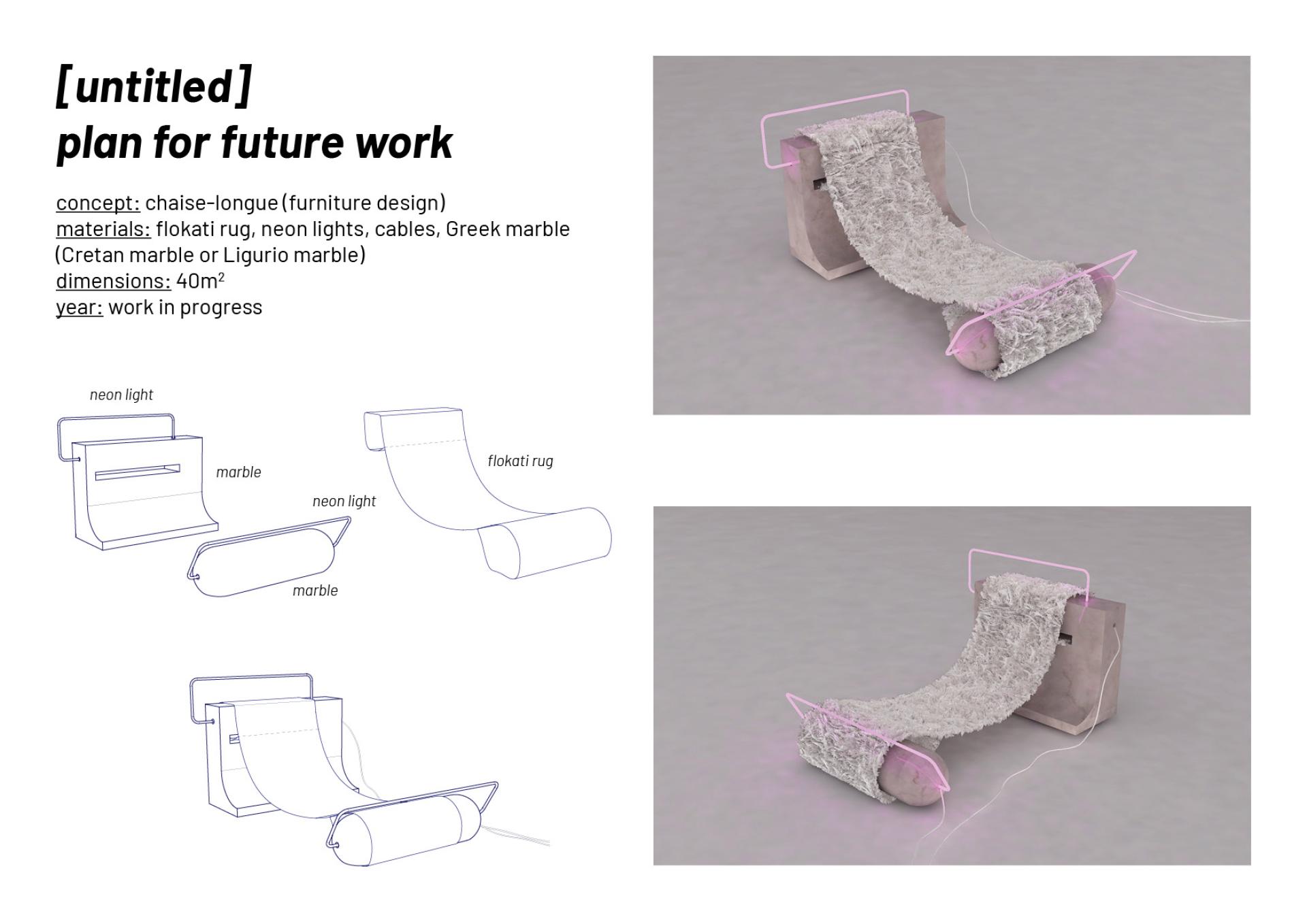HAND-MATTER
Basic information
Project Title
Category
Project Description
“HAND-MATTER” promotes local material cultures and crafting through collaborative design networks aimed at producing high quality design pieces. Designers and craftspeople closely collaborate throughout all design steps in order to vivify traditional hand-crafting techniques and redefine Greek design. Through sustainable ways making use of local materials and an inclusive co-design dialogue, the local design scene is enriched and externalized by merging the cultural past with future visions.
Geographical Scope
Project Region
Urban or rural issues
Physical or other transformations
EU Programme or fund
Which funds
Description of the project
Summary
This idea is inspired by traditional Greek crafting techniques and the local culture of materials. It focuses on utilizing and promoting local crafting techniques and materials for the production of contemporary design pieces within the field of Collectible Design. The latter relates to an international design movement and field of avant-garde objects of design (primarily furniture) that combine art with functional design. The main goal is to introduce Greek crafting and materials to this emerging design field, which is underrepresented in Greece, through creating liaisons between designers and a network of artisans specializing in local crafting.
Amongst the most renowned, but slowly extinct, traditional Greek crafting techniques are leather tanning (processing of raw leather), basket-making/wickerwork (weaving wicker rods to make baskets traditionally used by beekeepers to build hives), stone sculpting (treating locally mined natural stone), embroidery and tinkering metal utensils (covering copper-made utensils with a layer of tin to protect them from oxidization). Additionally, the most traditional materials broadly used in the past are the flokati (hand-woven rugs/throws made of sheep wool, extensively used in village houses and as capes for shepherds), locally extracted marbles, sea sponges collected by expertise divers. All these techniques and materials have a special history tightly connected to Greek culture.
The aim is to create a network between the few craftspeople still practicing such techniques and connect them with designers within the field of Collectible Design, while promoting local materials. Through this collaboration, designers will be able to take techniques and materials from the past and reposition them in the present through re-inventing their form and functionality. Bridging the past with the present, design outcomes of such collaborations inform future visions while maintaining a sense of belonging to the cultural past.
Key objectives for sustainability
All materials will be locally outsourced with the minimum possible environmental impact. Any waste from the processing of materials will be repurposed or recycled in order to ensure circularity of the design process to its maximum. Hand-crafting techniques that minimize pollution factors, in comparison to the use of heavy machinery and high energy-consumption processes, will be sought at all times. This turn to craftspeople is also intended to support small-scale local production communities and their economy. Additionally, given that all end-products will be made of natural materials, this suggests that everything can be recycled according to specifications in place. Even if the need for use of certain synthetic materials comes up, it will be ensured that these are carefully used and any environmental waste will be properly discarded or recycled, if possible.
Since it is at the core of the idea to promote traditional crafting techniques and local materials, this presupposes that there will be meticulous attention in maintaining this principle of natural materials and processing techniques with the minimum possible environmental impact. It is part of the main concept to emphasize the production of environmentally sustainable design products that can both last long in time and provide the highest of quality and aesthetics.
Key objectives for aesthetics and quality
Given that the end-products are intended to meet criteria of the art and design market, high aesthetic quality will be an overarching factor of the initiative. The design of avant-garde furniture targeted to the field of Collectible Design establishes aesthetics as a pivotal prerequisite in the entire design process. However, it is not only the designer’s aesthetic as in the sense of the aesthetic quality of the conception that will matter. All the previously mentioned crafting techniques entail high attention to detail, thus fostering a high degree of quality that will define the overall aesthetics of the final product. The materials too in their natural form and expression bear an aesthetic quality relating both to that which pleases the eye but also to the beauty found in their naturalness.
Collectible Design furniture might be functional but not in the commonly perceived sense. Moving within the intersections of art and design, they are abstract enough to be considered artistic but also functional in the sense of surfacing alternative forms of functionality. Such re-interpretations of functionality bring forward the essence of the experience. Under this scope, functionality of this kind of furniture relates more to the expanded experience that the design pieces compose and provide to the user than to the operationality of function.
Most importantly, it is in this concept’s objectives to promote a kind of design that is exemplary both in its aesthetics and in its ability to surface new experiences through its materiality and form. The end-products not being functional furniture in the wide sense but unique pieces of design, urge the user to explore them and create new experiences specific to these personal explorations. Lastly, the fact that the materials and techniques being used are representative of a cultural past, of memories that one might relate to certain spaces, people or events, enhances the qualitative experiences that these might trigger when in use
Key objectives for inclusion
In terms of inclusivity the main focus lies on creating a strong and honest collaboration between the designers and the craftspeople network. The aim is to actively include the artisans into the design process and promote their inclusion as a pivotal parameter driving the success of the outcomes. This fosters a co-design process where accountability is shared between both the artisans and the designer.
The intention is not to promote the commonly used model of the designer reaching out to the artisan with a specific idea in mind which the latter has to execute by managing the technicalities. It is rather a collaborative process where a dialogue is established between the designer and the artisans in order to shape ideas together. In this sense, ideas are malleable and revisable. This dialogue between designer and craftspeople is promoted and exhibited to the public through providing access to the details of the design and production process. Social media platforms will be used in order to showcase all steps of the process. In this way, the knowledge pertinent to the techniques and materials in use, as well as the ideation challenges and methods will be all accessible by the public.
There is a transparency characterizing the overall design process and collaboration which renders the concept a more democratized approach to design. This, along with promoting inclusivity throughout the design process, makes the project a significantly different approach to the sterile exclusivity of other forms of high-end product design or artistic production. It is often the case that exemplary ideas of well-known designers and artists are not giving any accreditation to the artisans and external manual work involved in their execution. This is not the case in this initiative.
Physical or other transformations
Innovative character
All these three dimensions are brought together under the overarching intention of preserving and promoting culture, collaboration, creativity and innovation through transparent co-design, socially and environmentally thoughtful techniques, and great attention to quality.
The very nature of the concept places these three parameters in tight affinity and interdependency. Environmental sustainability and circularity are supported by collaboration in the sense of designers and artisans co-designing and producing under well-thought processes that minimize environmental impact and foster efficiency in communications. Good communication between all parties involved secures both the aesthetical and experiential qualities of the end-products, and their circularity. Design as driven by the beauty and natural properties of the materials, instead of as imposing form over materiality, suggests minimum degree of processing which in turn increases sustainability of the products. Additionally, hand-crafting techniques applied by local artisans promote circularity in the local economy and promote concepts of sustainable production within well-distributed networks. Lastly, engaging all parties in an inclusive design process where everybody is accountable increases feelings of responsibility and care for sustainable and qualitative results which are consequently providing better experiences to the public.




